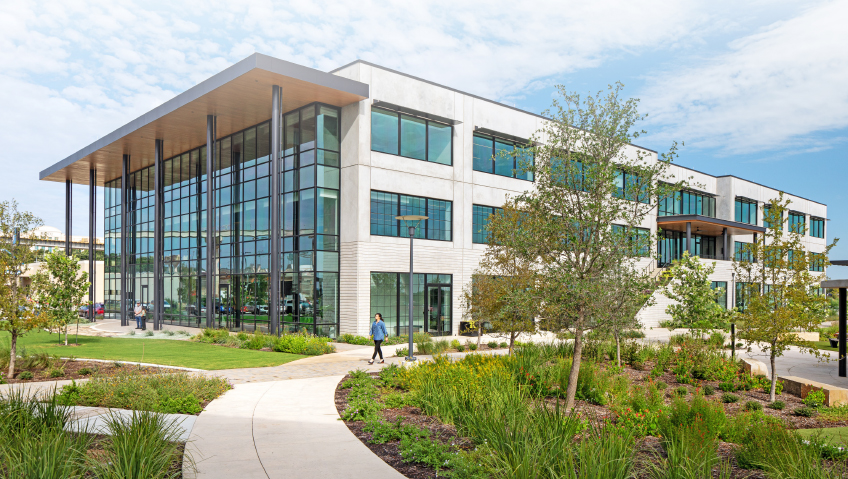Dedicated to providing top-tier mineral paints, paint manufacturer KEIM Mineral Coatings of America operates from Charlotte, North Carolina and was incorporated in 2007. The American business is a wholly owned subsidiary of its main company, Keimfarben, a producer of mineral-based products and systems that was established in 1878 in Germany by chemist Adolph Keim. He invented and patented the first mineral silicate paint in the company’s initial year, and the company has continued to stand by its product for over a century.
The company quotes its founder as saying, about his company and workers: “We want to live, work, struggle, fight, and take care of our fellow human beings, working for the generations to come, to make things better on Earth.” This has since become the ethos by which Keimfarben and KEIM Mineral Coatings of America have done business; it’s an approach the brand aims to bring not only to the paints industry, but to the world at large.
Boasting over 100 years of reliability, KEIM’s signature paints offer qualities that are hard to match. Its mineral silicate paints bond to masonry in such a way that paints literally become part of the surface and will never peel or lose adhesion. The paints are naturally vapor-permeable so that moisture can freely escape without damaging the finish. They are water-repellent and dry out quickly, allowing less time for mold, dirt, or mildew to become a problem, and are also non-flammable. Mineral silicate paints can be used in myriad locations such as underground stations, school buildings, tunnels, and many others.
Managing Director Roy Suttles describes KEIM’s customer base as half commercial and half residential, as the company works to make sure the design needs of all clients are met. He emphasizes that KEIM’s paints are not the same as other paint suppliers in North America and operate in a much smaller part of the American paint market. Competitors in the mineral paint space in the West often do not share the same values.
One such value that the company has carried since its inception is its pledge to make the world a better place by using environmentally sustainable paint solutions. Over eighty percent of the company’s products are Cradle to Cradle Certified (C2C). This refers to a highly advanced standard for designing and making products with attention paid to sustainability. C2C certification involves independent third parties examining and assessing the substances in all of a company’s products. In the case of KEIM, it frequently works with EPEA GmbH—part of Drees & Sommer, a research and consultation firm dedicated to C2C solutions.
This C2C designation is recertified biannually, and the assessment is based on five factors: material health—products are safe and healthy for the environment; material reutilization—product promotes recyclability; renewable energy—product is created by and / or uses energy-efficient means; water stewardship—product effectively uses water resources; and social fairness / responsibility—manufacturers conduct business with these goals in mind. These points are always of the utmost importance for KEIM.
The demand for mineral paints is continuing to increase, thanks in large part to the inherent sustainability of mineral paints, another reason why KEIM keeps this fact at the fore of its business identity. Whereas acrylic or latex paints made from petroleum are made from a depleting source of raw materials, mineral paints are created from a more renewable source. As such, demand is growing in the market due to increased awareness.
Suttles expounds on KEIM’s sustainable practices by saying it is largely about eliminating toxins, comparing lifecycle costs to upfront construction costs, and focusing on quality and longevity. These practices extend to the very way in which the company makes its paints; all paints are made in plants powered by renewable electricity and operate on recycled water to adhere to its C2C certification standards. Even as far back as its initial year of 1878, the company was dead set on leaving the planet a better place, and that remains the focus. “Sustainability drives every decision we make today,” Suttles states.
During the initial stages of the COVID-19 pandemic in 2020, KEIM’s market segment was not as affected as other businesses since building material providers were considered essential. Since then, the company’s operations have grown such that it had to move into a significantly larger facility in 2021, with the size being effectively quadrupled and more capable than ever of stocking new material. In the past year, the biggest impact on the business has been its continued devotion to C2C certification. Suttles admits that it is a huge investment of time and money.
Along the way, the market has continued to evolve in interesting ways. These days, property owners in the construction space are looking for both value and LEED certification in products they want to buy. The current outlook for the construction industry, as Suttles sees it, is quite good, especially in the Western market. The market continues to grow dramatically in paint and brick for construction, especially for single- and multi-family homes.
Along with seeking greater sustainability and value in products, consumers are becoming more educated about what they buy and are passionate about using only the best products for their projects. Suttles describes these more educated consumers as ‘valedictorians,’ as they understand paints better than any consumer demographic has in the past. Generally, consumers are willing to pay more for products that meet their specific needs and that are more efficient, more eco-friendly, and better for health. This exact need is where KEIM steps up to deliver what is desired and needed for today’s industry.
Suttles describes 2023 as a bellwether year for the company, driving the need for the team to think strategically about its future. KEIM still receives many of its materials from Europe but this strategy may soon include moving production to the United States altogether.
“Many raw materials aren’t available locally, so we’d need to import,” Suttles explains. This is a goal for further down the line, as is taking on a new warehouse to accommodate growth in the past two years since its last warehouse upgrade.
KEIM will continue to support residential growth through its brand, web store, and private labeling. As the commercial side of the business develops into new areas, it will remain steadfastly focused on serving its customers and on being the best paint supplier clients have in their arsenal.
If over a century of a proven global track record is not proof enough, KEIM Mineral Coatings of America’s ongoing commitment to sustainable practices and being the best in its field continues to prove its strength as a leading paint provider.






